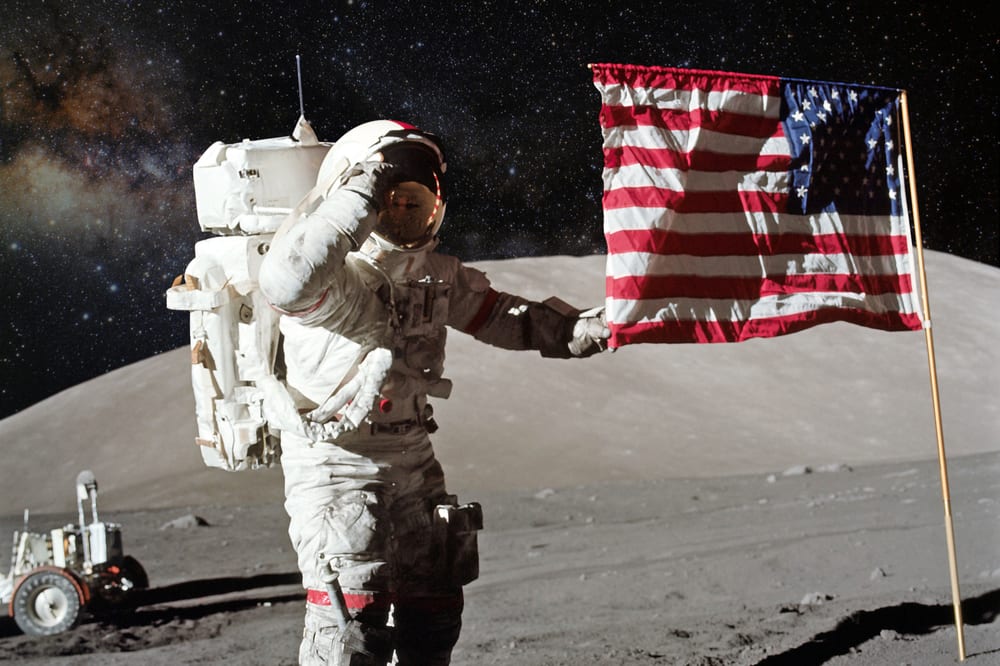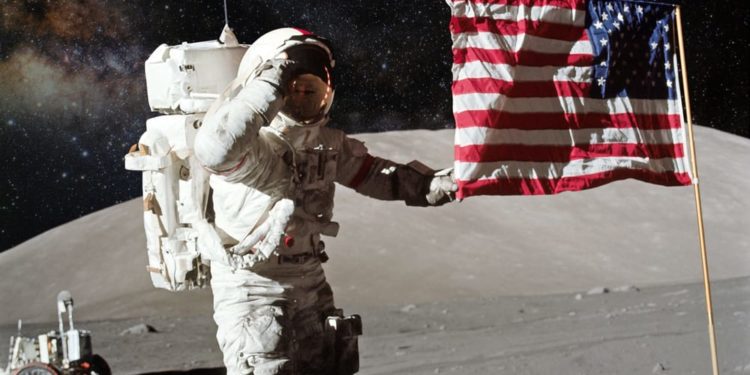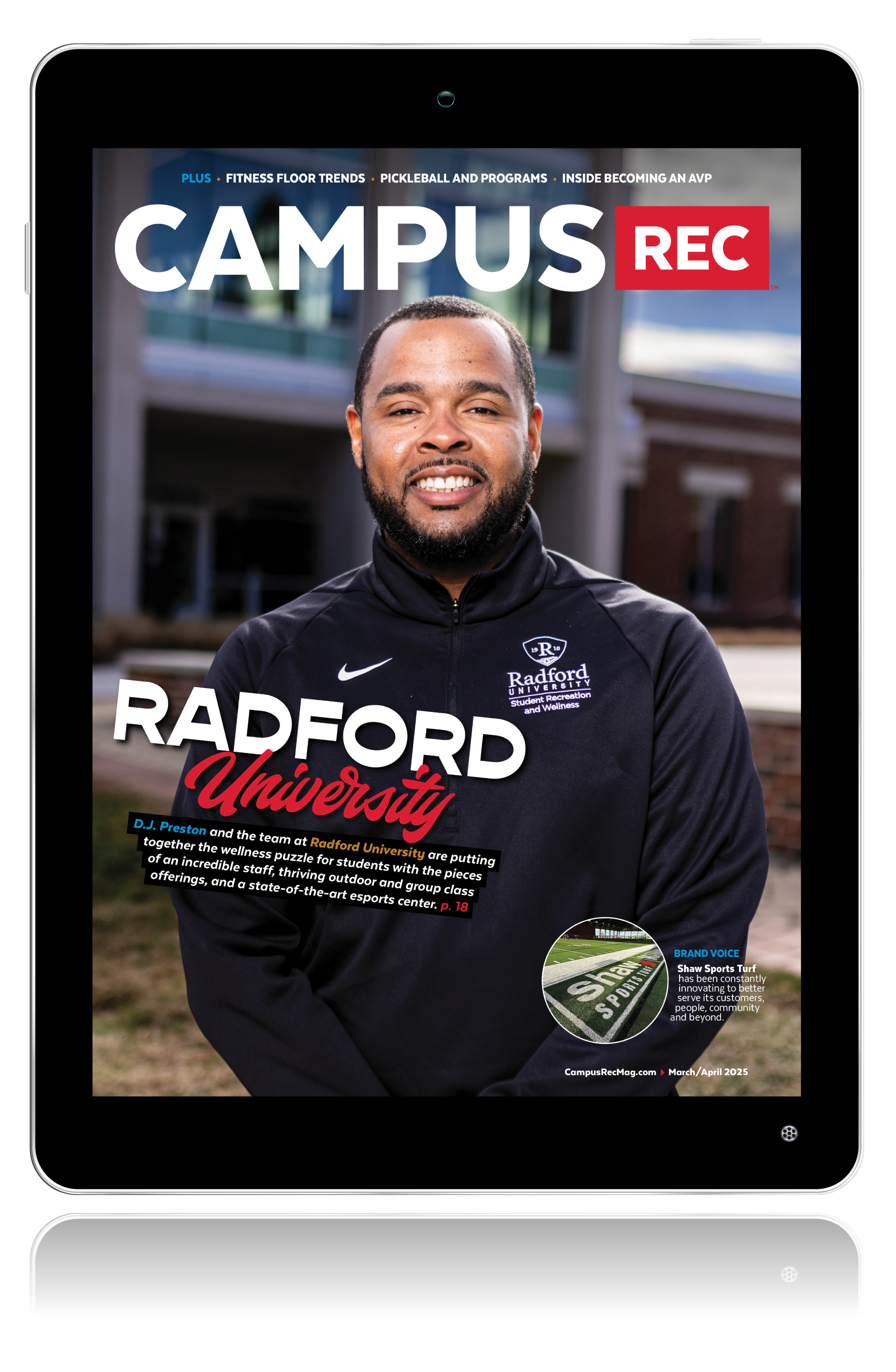
Matt Beck shares on lessons learned from the moon landing, from casting vision to failure response and more.
July 20, 2019 marked the 50th anniversary of the moon landing.
The event sits in the public imagination as one of the most important moments in human history. I spent time reflecting with my team on how it can apply to what we do in campus recreation.
In 1962, President Kennedy boldly declared in a speech at Rice University, “We choose to go to the moon. We choose to go to the moon in this decade and do the other things, not because they are easy, but because they are hard, because that goal will serve to organize and measure the best of our energies.”
In making that statement, Kennedy was laying out a vision of space exploration and U.S. leadership in the world that stretched capabilities beyond even what was possible at the time. The U.S. had only one year earlier put a man in space for the first time. To put someone on the moon may have seemed impossible. This is one of the strongest examples of vision casting in our history.
Casting Vision
A compelling vision like the one used by JFK in 1962 can help others visualize and be inspired to action by ideas. Kennedy would not have made his bold statement about going to the moon without knowing his team at NASA was not only capable but also committed to executing the steps necessary to see the vision become a reality. The goal of putting people on the moon and getting them safely home stretched the capabilities of his team and pushed them to innovate beyond what was currently possible.
Fred Devito once said, “If it doesn’t challenge you, it won’t change you.” When your team sets goals, do they stretch your program or your area’s current capabilities? Ask yourself: Does your team’s vision or goal challenge you?
Nelson Mandela once said, “Vision without action is just a dream, action without vision just passes the time, and vision with action can change the world.”
The Path to the Moon
Most people do not realize the process of getting to the moon was already underway. Kennedy’s moon goal was based off data, planning and council from his team at NASA establishing if they were provided with the necessary resources, a lunar landing would be possible. Vice President Johnson also provided the strong belief he could work with congress to obtain the necessary funding.
A multi-step pathway had been established and was already underway with the Mercury program. The goal of Project Mercury was to determine whether humans could survive in space. Project Gemini which expanded space flight to two individuals in space for multiple weeks and included docking and astronauts being outside the space craft was the next step. Project Apollo was the final step which expanded the crew to three with the primary mission to land men on the moon, explore it and return them safely to Earth. The first Apollo mission never flew as a cabin fire during a launch rehearsal test killed all three crew members resulting in a 20-month delay of manned space flight.
After assessing the failure of Apollo 1 and testing other space flights to perfect the new Saturn V rocket, Apollo 8 took astronauts into the moon’s orbit. Apollo 9 and 10 tested the lunar module in earth orbit and lunar orbit. Finally, in July of 1969, Apollo 11 carried the first men to the moon’s surface while Michael Collins remained in lunar orbit. President Kennedy’s vision was fulfilled.
Setting SMART Goals
If you are not intentional about setting goals, failure is more likely to occur, and your vision will never become a reality. Effective goals follow the SMART-goal model:
- Specific: What exactly do you want to accomplish, in what time frame and with what group or demographic?
- Measurable: How will you track your progress? Do you have an assessment tool you will use? Are there key performance indicators in your plan to help you determine if you are making appropriate progress?
- Attainable: Is what you want to do actually possible? If it isn’t, you may need to scale down the goal.
- Relevant: What matters most to you, your team and the department? Why focus on anything else?
- Time-bound: How much time do you need to achieve the goal? How long did it take you or others to achieve something similar?
You need to think about not only what you want to accomplish, but also how you will get there. Once you have established your goal, create an action plan that systematically proceeds to accomplishing the goal.
How to Respond to Failures
When failures and obstacles will occur, and they will, how do you as a leader react? Leadership author John Maxwell said, “If you’re not failing, you’re probably not really moving forward.”
If some part of the plan or the goal has failed, you have some valuable data on what hasn’t worked for you. Thomas Edison once commented on his failed attempts to create the lightbulb in saying, “I have not failed. I’ve just found 10,000 ways that won’t work.” If NASA cancelled the moon mission after the failure of Apollo 1, not only would the moon landing never have happened, but the technologies created as a result of the Apollo program such as shock absorbing shoe insoles, solar panels, vacuum sealed food, shock absorbers on bridges, the CAT scan, the microchip, the micro camera, cordless tools, memory foam, scratch resistant lenses and satellite television would not exist. They assessed what went wrong, fixed it and continued forward.
Preparation and training help you respond when the unexpected occurs. On lunar descent, an unusual program alarm – Code 1202 – flashed, indicating a problem with the guidance computer. Fortunately, the code was recognized from earlier simulations and provided the critical assurance they could proceed. No department is immune from a “Code 1202.” When the unpredictable happens, lean on your training. In campus recreation, we invest countless amounts of time into training and drilling for situations that may or may not happen to prepare students to react if it does. In the end, you have to make a decision. The key principle is to keep moving forward.
Teamwork Toward the Goal
Lastly, let’s not forget about Michael Collins, the astronaut on Apollo 11 who didn’t walk on the moon. He was their only way home. If something went wrong in retrieving Aldrin and Armstrong, the astronauts would be stranded. Every organization needs team members content to do their job, who are willing to be part of a larger effort and not likely to complain or worry about more glamorous tasks being assigned to others. In every campus recreation department, there are countless behind the scenes people whose contributions help you achieve your goals or whose help you needed in to get where you want to go. Be sure to show appreciation both privately and publicly to all who are a part of the process, and celebrate your accomplishments together.
Fifty years later, the lessons that we can learn from this achievement are still present. Set an inspiring vision that stretches your team. Set an action plan in place toward achieving the goal. Adjust to failures, obstacles or setbacks as they happen, lean on your training to help you navigate them, learn from them, and keep moving forward. Do not forget about the people in the background that make achieving the goal possible.
Image courtesy of Shutterstock










